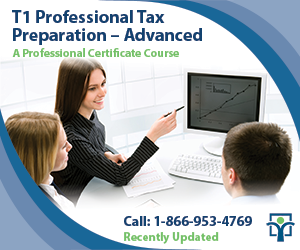Last updated: February 16 2016
It’s Complicated: New T657 Lifetime Capital Gains Deduction Form

CRA has released a newly revised 9-page form T657, which takes into account the increase of the Lifetime Capital Gains Deduction (LCGD) to $1 Million for Qualified Farming and Fishing Properties for dispositions after April 20, 2015 and to $813,600 for Qualified Small Business Corporation Shares for tax year 2015. It can safely be said this form is not for the faint of heart.
First, the deduction is one half these new gross amounts, $500,000 and $406,800 respectively, although further adjustments are required to take into account capital losses claimed in prior years, a CNIL (Cumulative Net Investment Loss) Balance, and ABILs (Allowable Business Investment Losses).
To qualify, taxpayers must be residents of Canada throughout tax year 2015, but again exceptions exist in certain cases for part year residents. Further calculations are required when there is a reserve taken to account; that is, when a purchaser pays for the qualifying disposition over time.
Depending on the type of property that was disposed of and when the disposition occurred, a series of carry forward provisions, require an incorporation of “ancient” tax law. First, there were changes to the taxable portion of the gain in the period since the CGD was introduced:
- From 1985 to 1987, the capital gains inclusion rate was 50%
- In 1988 and 1989, it was 66 2/3%
- In 1990 and 1991, it was 75%
The fact that the CGD limit has changed frequently in this time makes the calculations even more interesting. As per the T657:
- The limit on gains arising from dispositions in 2014 of qualifying capital property is $400,000 (one half of a lifetime LCGE of $800,000).
- The limit on gains arising from the dispositions of qualifying capital property after March 18, 2007 and before 2014 is $375,000 (one half of a lifetime LCGE of $750,000).
- The limit on gains arising from these dispositions from 1985 to March 18, 2007 is $250,000 (one half of a lifetime LCGE of $500,000). Further, allowable capital losses claimed in 1985 were restricted to a maximum $2,000.
Those are the basics; the form admirably sorts out the rest:
- Part 1 of the form calculates the Annual Gains Limit. This is the eligible taxable capital gains less net capital losses and ABILs claimed.
- Part 2 calculates the Cumulative Gains Limit. These calculations take into account eligible capital gains reported after 1984.
- Part 3 sorts out the types of dispositions and the relevant dates and amounts, over 5 pages, leading to the actual claim on Line 254 of the tax return.
 |
The calculations are backed with detail on Chart 1, which calculates net capital losses in the period 1985 to 2014, and Chart 2 calculates Capital Gains Deductions claimed in prior years.
Tax preparation software of course saves the day, for tax advisors and taxpayers alike; however a “reverse engineering” of the calculations is necessary to understand the effects of losses and carry overs on the actual outcomes.
For these reasons, a good review of the Capital Gains Deduction provisions is mandatory at this time of the year for any tax accountant. Further, as important for any client using professional tax accounting services for the first time, is the realization that it’s going to take time to reach back into time to produce all the documentation required to do the calculations accurately.
The moral: it’s never too early to start pulling your tax files together when your year has included sophisticated business or investment transactions.
Evelyn Jacks is a best-selling Canadian author of 52 books including her latest Family Tax Essentials. Evelyn is the Founder and President of Knowledge Bureau, a national educational institute. To learn more about professional tax preparation and tax-efficient wealth management, see www.knowledgebureau.com.
ADDITIONAL EDUCATIONAL RESOURCES: Knowledge Bureau’s T1 Professional Tax Preparation - Advanced course, EverGreen Explanatory Notes and the Income Tax Estimator.





